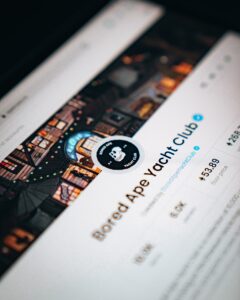
Everything you’ve always wanted to know about the future of discussing the future.
What is the Metaverse, exactly?
The term “Metaverse” refers to a combination of virtual reality and mixed reality worlds that can be accessed via a browser or headset and enable real-time interactions and experiences between people who are physically apart.
As with the “walled gardens” of the early internet [darpa.net, bit.net, or aol.net] that eventually came together to create the internet as we know it today, the current state of what will become the Metaverse is actually a collection of disjointed metaverses. Each of the metaverse worlds that are currently available has its own access, avatars, interactions, and currency. For instance, Fortnite is distinct from Roblox, which is distinct from Decentraland and other things.
The very recent ability to completely “own” virtual goods, services, or real estate is a contributing factor in the current rise in interest in the Metaverse. Blockchain, the “crypto finance hub,” enables the precise definition of a virtual good so that it can be purchased and sold. On this new economy, entire metaverse worlds have been created. For instance, the metaverse worlds of Decentraland and Sandbox both sell virtual land to companies that create virtual structures. Your avatar can explore the Sotheby’s building in Decentraland to see what is being auctioned off. Sotheby’s is a nearly 300-year-old auction house.
If paying real money to own virtual land sounds a little crazy, consider how most of us once felt about buying domain names. Republic Realm, a company that develops land in the Metaverse, recently paid $4.3 million for a piece of virtual land in the metaverse-world Sandbox. But then it stopped being absurd. And lots of people profited greatly from the sale of desirable domain names.

Q: Why should leaders care?
“If you’re trying to reach a 15-30-year-old audience, they’re probably not on the internet or social media anymore; they’re probably in the Metaverse.”
Nikeland, a place in Roblox where you can hang out, play, and dress your avatar in virtual Nike products, debuted last year. Nikeland had been visited by nearly seven million people as of early this year. In 2020, 12.3 million people attended a single virtual concert hosted in Fortnite by rapper Travis Scott. When you watch the video of that concert (which is available online), you quickly realise that the dancing figures… were all real people connecting from all over the world.
“There are things you can do in virtual reality and augmented reality that you just can’t do in real life across distance. You can simulate being together in ways that Zoom cannot. You can explain something by pointing to it, using hand gestures (in some platforms), drawing on a piece of paper, or going somewhere together. Consider the incredible possibilities, such as a surgeon collaboration or the creation of a clay model for a new car design. ”
For organisations, a virtual or hybrid meeting feels as close to being together in a room as you can get. Of course, it’s not the same as being there in person, but it’s a close second. My team is set up for collaborative meetings in this manner. When we need a break from work, we have 15-minute one-on-one meetings to play virtual ping pong with colleagues from around the world. It’s the virtual equivalent of a coffee break at work; it fosters genuine connection and social bonds.”
Q: When will it arrive?
She predicts “massive adoption and uptake” within the next few years. “It’s just a matter of time,” he says.
![]()
Q: What should leaders do right now to address this issue?
According to Woolsey, organisations must consider three metaverse categories:
1) The customer or consumer is in the spotlight. “If your target market is 15-30-year-olds, you must be present. You must provide an experience that engages your audience while remaining consistent with your brand. You could create a store that sells virtual goods or connects to your e-commerce offerings, or you could host an event or another type of engagement.”
2) The employee’s perspective. “Metaverse encounters are ideal for hybrid meetings, multi-location training programmes, and institutional events. When you have a dispersed team, you can use this technology to bring them together, building community, affiliation, and engagement.”
3) Internal business operations. “Metaverse technology can be used to explore industrial or operational scenarios that would be far too expensive to build in real life. Automobile manufacturers are already designing with ‘digital twins,’ conducting their first dummy crash test in a metaverse world, and collaborating on model modifications in augmented reality.”
Q: How do companies get started?
“Don’t do Metaverse just to do Metaverse,” Woolsey advised. “Think about where you’re most likely to find value in each of the three categories I mentioned. Now is the time to go there and experiment. Begin small and test with your intended audience to determine the true value, both qualitatively and quantitatively. Find the path that delivers strategic value and plan to scale based on what you learn.”
![]()
The ability to create value in the Metaverse should be one of several tools available to your organisation in order to meet its strategic goals.
Good luck… and hope to see you there! Or my avatar will see your avatar. lol














